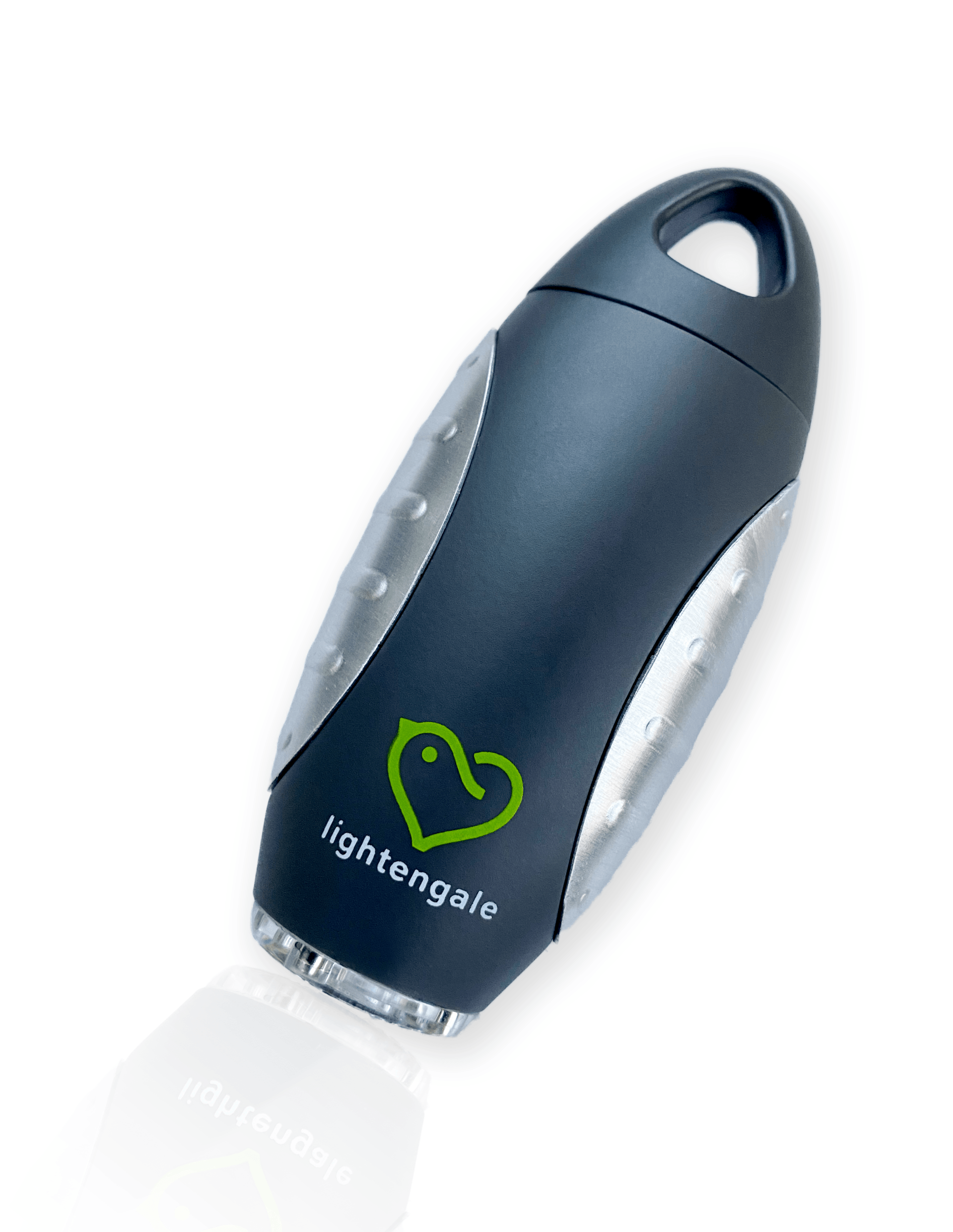Fewer errors. Less time wasted.
More lives saved.
By clearly lighting up a single IV line within a group, Lightengale makes the line easier to see and trace, helping avoid a prevalent stressor in the ICU: infusion line mixups.
Managing IV medication lines in the ICU is extremely time consuming and highly stressful.
The patients are incredibly fragile, and ICU patients often receive more than twice the number of IV drugs compared to non-ICU patients, and infusion line differentiation can be a matter of life and death. 1 We know that the higher number of drugs being infused intravenously translates into a greater likelihood of an adverse drug event, 2 as mixing up any one of those lines may have fatal consequences for the patient. In the ICU, nearly 40% of medication errors occur during administration, 3 and over 20% of errors are due to IV line mixups. 4
Despite the prevalence of IV administration errors, there remains a low appreciation for this common threat to patient safety. Every nurse knows that the single most important step required to prevent a mixup is to manually trace every infusion line from end to end, every time an interaction is required. While crucial for patient safety, every nurse also knows that manual line tracing is time consuming, tedious, highly stressful, and still prone to error. Using line labels to identify each end of a line is better than nothing, but in one study, incomplete labeling of IV tubing represented over 31% of documentation errors. 5 Patient safety demands a better solution.
1. Intensive Care Medical Experimental Doesburg et al. Intensive Care Medicine Experimental 2015, 3(Suppl 1):A555 http://www.icm-experimental.com/content/3/S1/A555
2. Critical Care Medicine Kane-Gill, Sandra L. PharmD, MSc, FCCM, FCCP; Kirisci, Levent PhD; Verrico, Margaret M. RPh; Rothschild, Jeffrey M. MD, MPH Analysis of risk factors for adverse drug events in critically ill patients*, Critical Care Medicine: March 2012 - Volume 40 - Issue 3 - p 823-828 doi: 10.1097/CCM.0b013e318236f473
3. BMJ Quality & Safety Carayon P, Wetterneck TB, Cartmill R, Blosky MA, Brown R, Kim R, Kukreja S, Johnson M, Paris B, Wood KE, Walker J. Characterising the complexity of medication safety using a human factors approach: an observational study in two intensive care units. BMJ Qual Saf. 2014 Jan;23(1):56-65. doi: 10.1136/bmjqs-2013-001828. Epub 2013 Sep 19. PMID: 24050986; PMCID: PMC3938094.
4. Pennsylvania Patient Safety Authority Amanda Wollitz, PharmD, Patient Safety Analyst; Matthew Grissinger, RPh, FISMP, FASCP, Manager, Medication Safety Analysis. Aligning the Lines: An Analysis of IV Line Errors. Pa Patient Saf Advis 2014 Mar;11(1):1-7.
5. Canadian Journal of Hospital Pharmacy Summa-Sorgini C, Fernandes V, Lubchansky S et al. Errors Associated with IV Infusions in Critical Care. Can J Hosp Pharm. 2012;65(1):19-26. doi:10.4212/cjhp.v65i1.1099
Lightengale offers a simple, yet powerful solution.
Visibly Safe
Reduced Risk
By clearly lighting up the specific line the nurse needs to identify, Lightengale makes the line easier to see, reducing errors and reducing the time it takes to trace the line.
Increased Efficiency
This end-to-end visual safety net increases efficiency and patient safety by reducing the complexity of infusion identification.
a
Reliable Support
That means less time wasted wrestling spaghetti syndrome, more time focusing on patients, and more lives saved.


Safety you can see. By lighting up a specific infusion line from pump to patient, Lightengale makes it easier to differentiate one entire line in the group.
When turned on, the Lightengale system is clearly lit by the fiber optic cable attached to the line that provides constant light for the entire length of the IVT.
While colored lines aid in IV identification, they are often not translucent enough to easily survey the contents of the IVT. The Lightengale IVT System is both visible and transparent, so nurses can easily identify obstructions such as air bubbles in the IVT.
“Most of these patients are going to have upwards of 10-20 lines. For every minute, two, or three that it takes for you to trace a line, all of that is time that could be spent taking care of your patient.”
Alaina Lee, Intensive Care Unit Nurse






